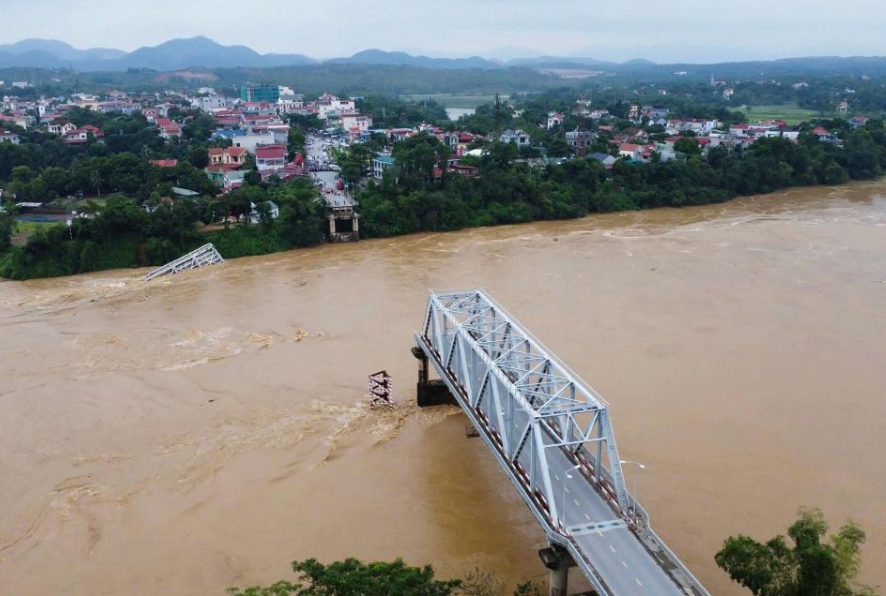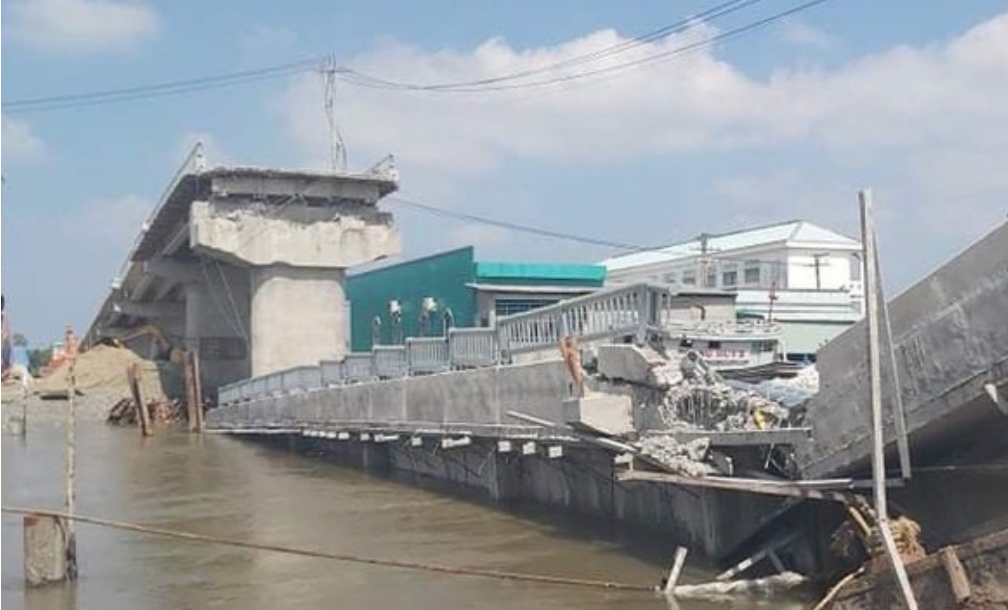A steel bridge over the swollen Red River in Phu Tho province, northern Vietnam, collapsed on Monday morning amid relentless rains from a former typhoon. The collapse, which saw several motorbikes and cars plunge into the river, has prompted ongoing rescue operations. Initial reports indicate that three individuals rescued from the river have been hospitalized, but no fatalities have been confirmed from this incident yet.
Typhoon Yagi, one of the most powerful storms to strike Vietnam in decades, made landfall on Saturday with winds reaching 149 kph. Although it weakened to a tropical depression by Sunday, the intense rainfall has continued, causing severe flooding, landslides, and power outages across the region.

On Sunday, a landslide in Sa Pa town resulted in six deaths, including an infant, and left nine others injured. Overall, the storm has claimed 21 lives and injured at least 299 people.
In the capital, Hanoi, the skies remained overcast with intermittent rain as cleanup efforts began. Heavy rain is expected to continue, potentially surpassing 40 centimeters in some areas.
The storm has also led to widespread power outages, initially affecting around 3 million people in Quang Ninh and Haiphong provinces, with the extent of restoration still unclear. Industrial parks and factories have been heavily damaged, with roofs blown away and facilities inundated.
In response, Prime Minister Pham Minh Chinh has allocated USD 4.62 million for recovery efforts in Haiphong city. Typhoon Yagi has also devastated agricultural lands, damaging nearly 116,192 hectares of rice fields. Before hitting Vietnam, the typhoon had caused at least 20 deaths in the Philippines and three in China.
Experts, including Benjamin Horton from the Earth Observatory of Singapore, note that storms like Typhoon Yagi are intensifying due to climate change. Warmer ocean waters provide more energy, leading to stronger storms with increased wind speeds and heavier rainfall.




